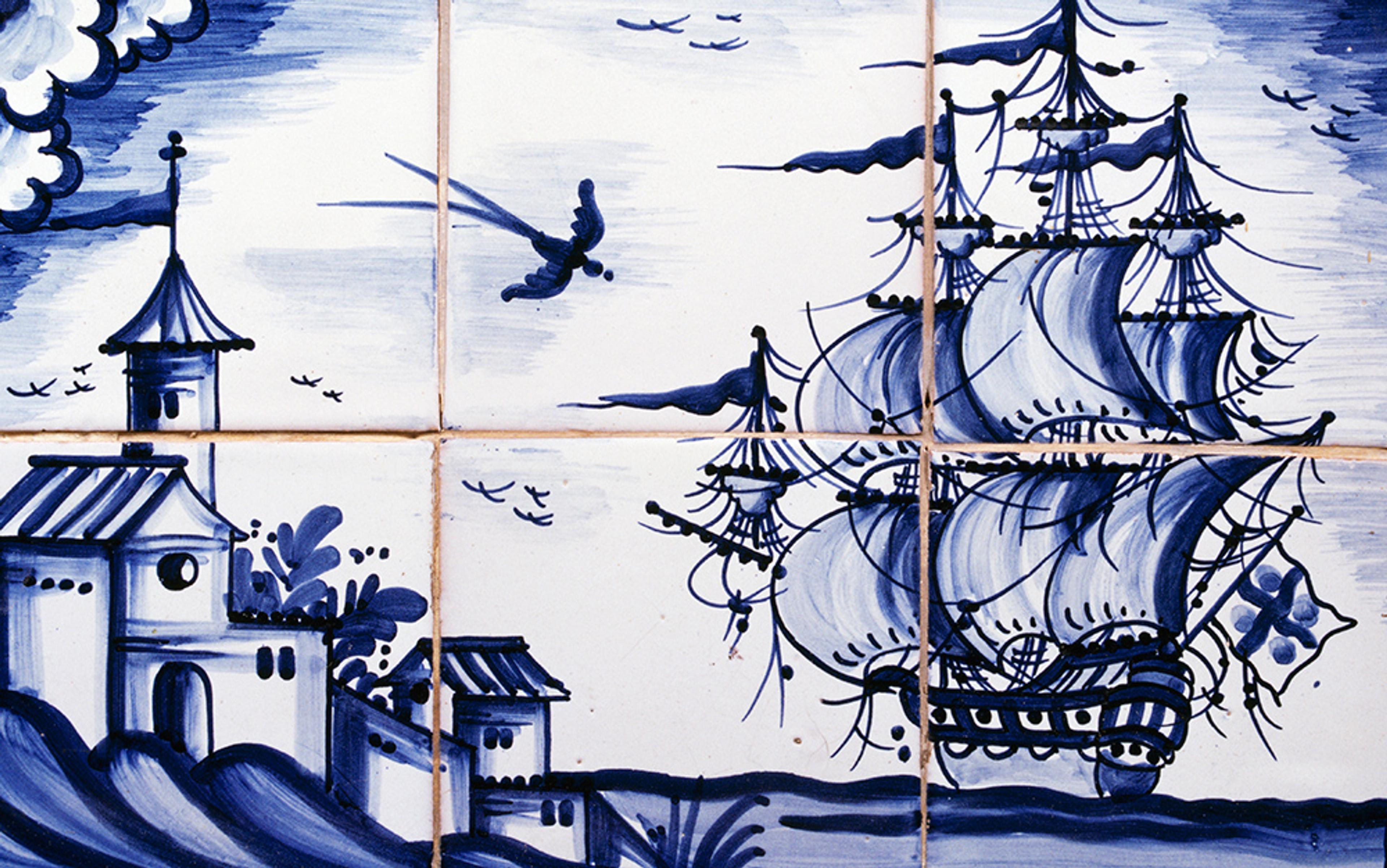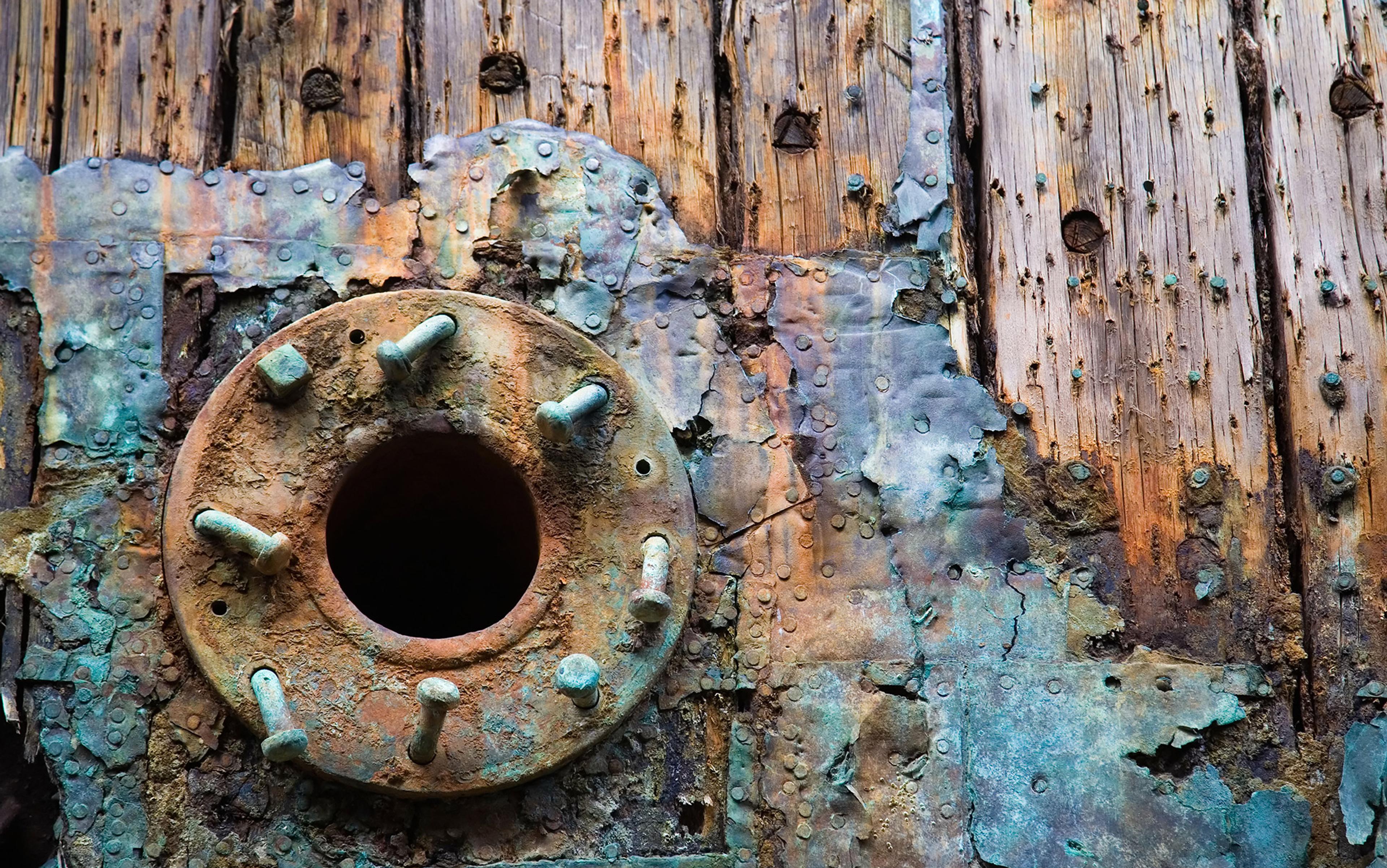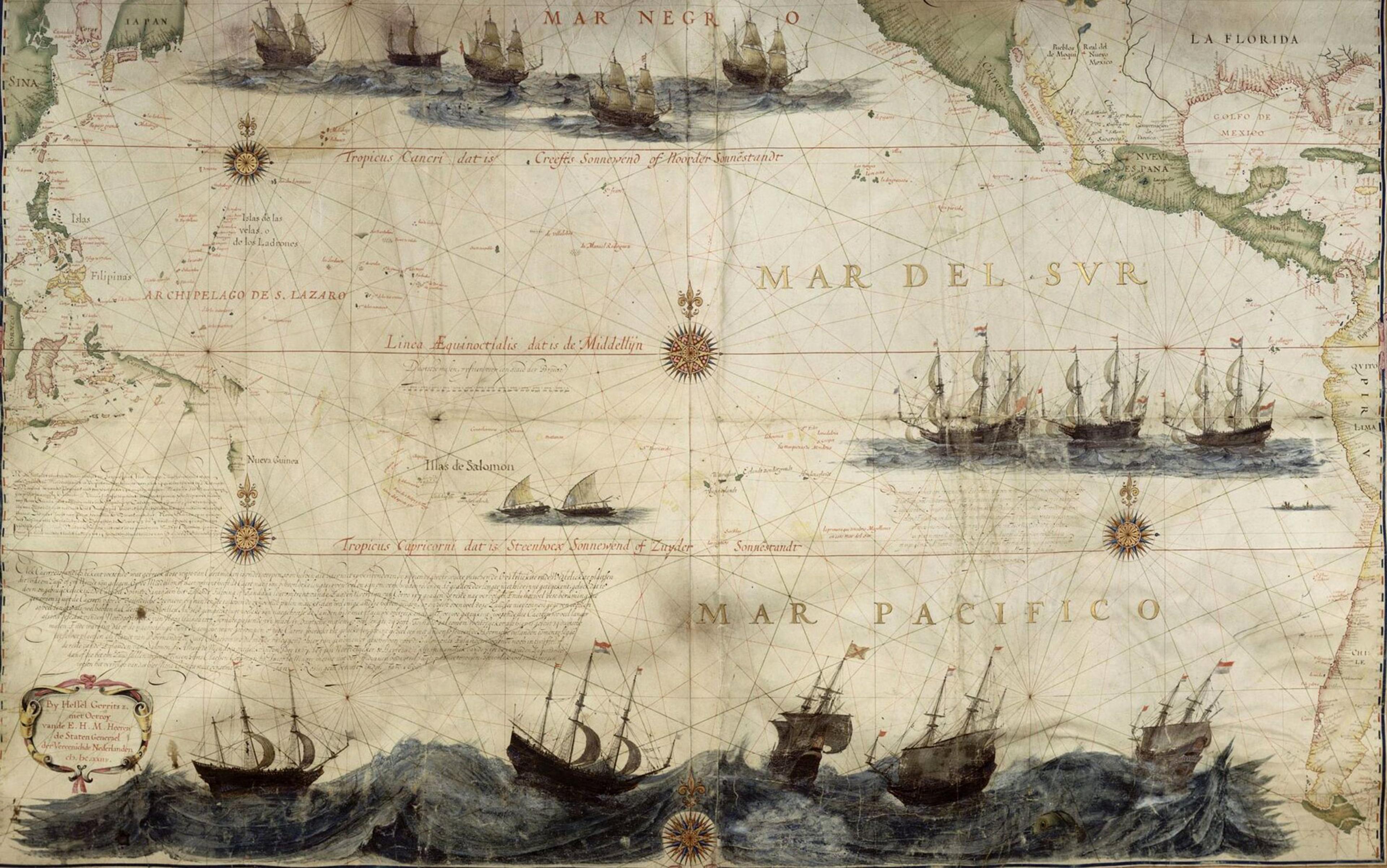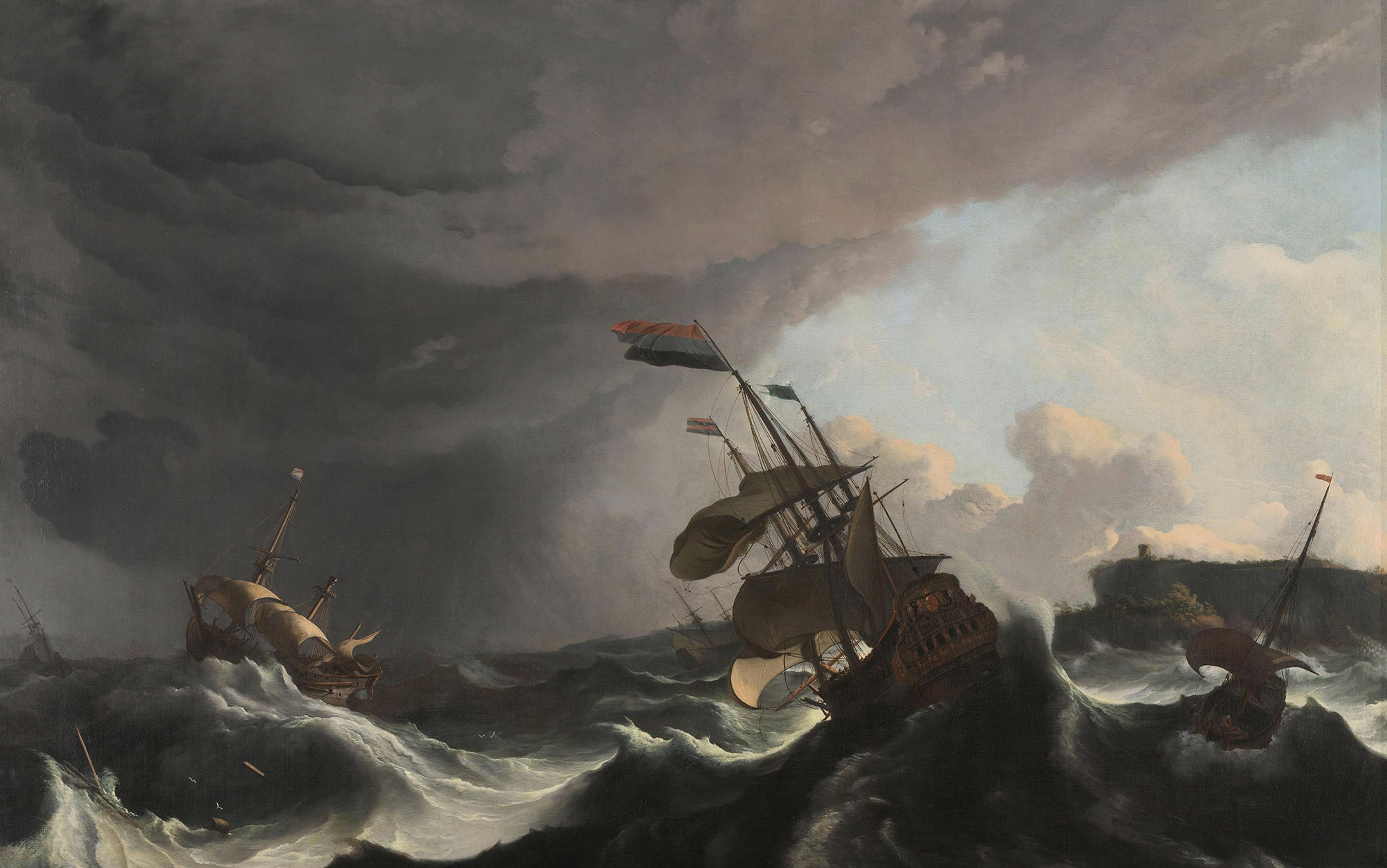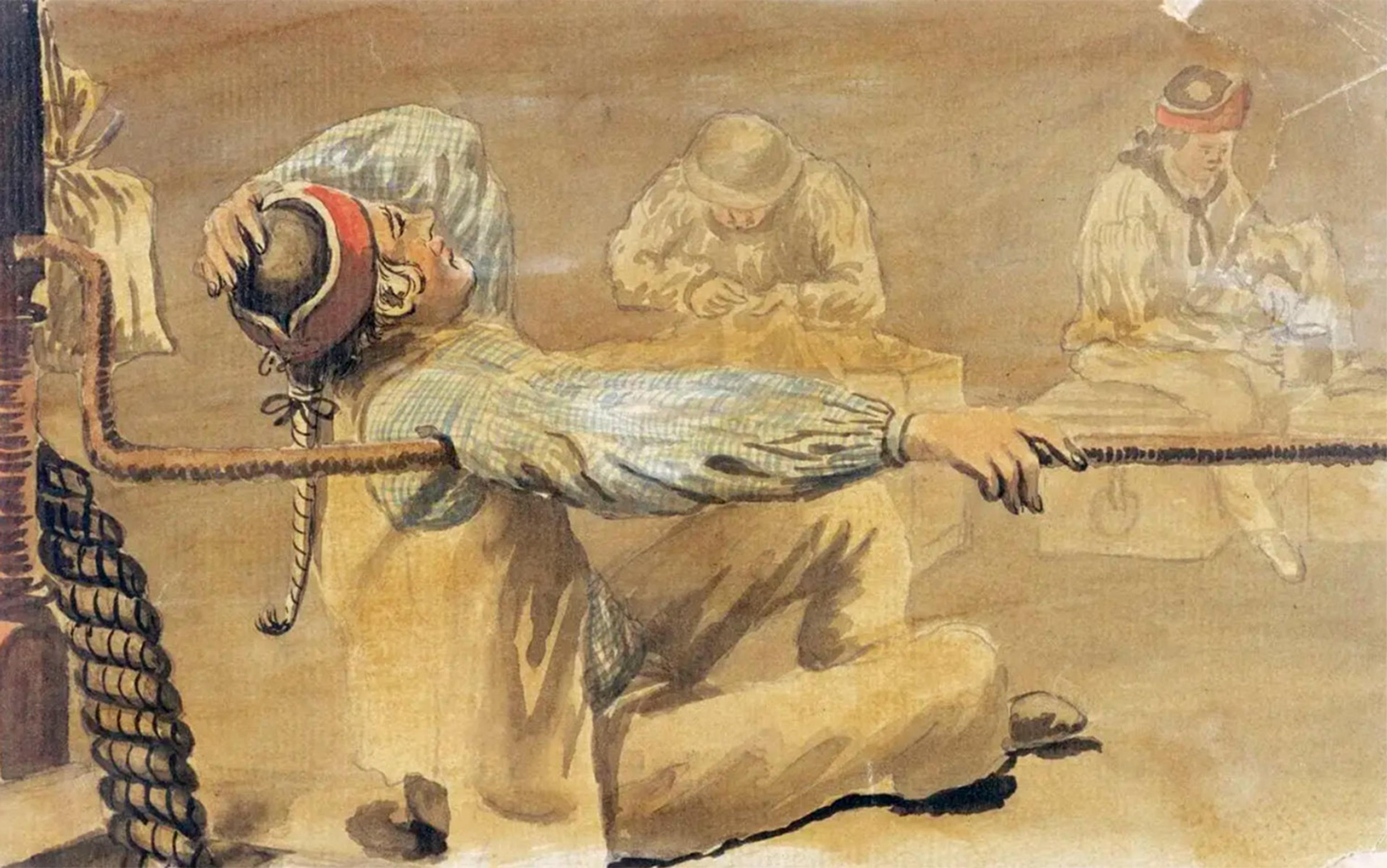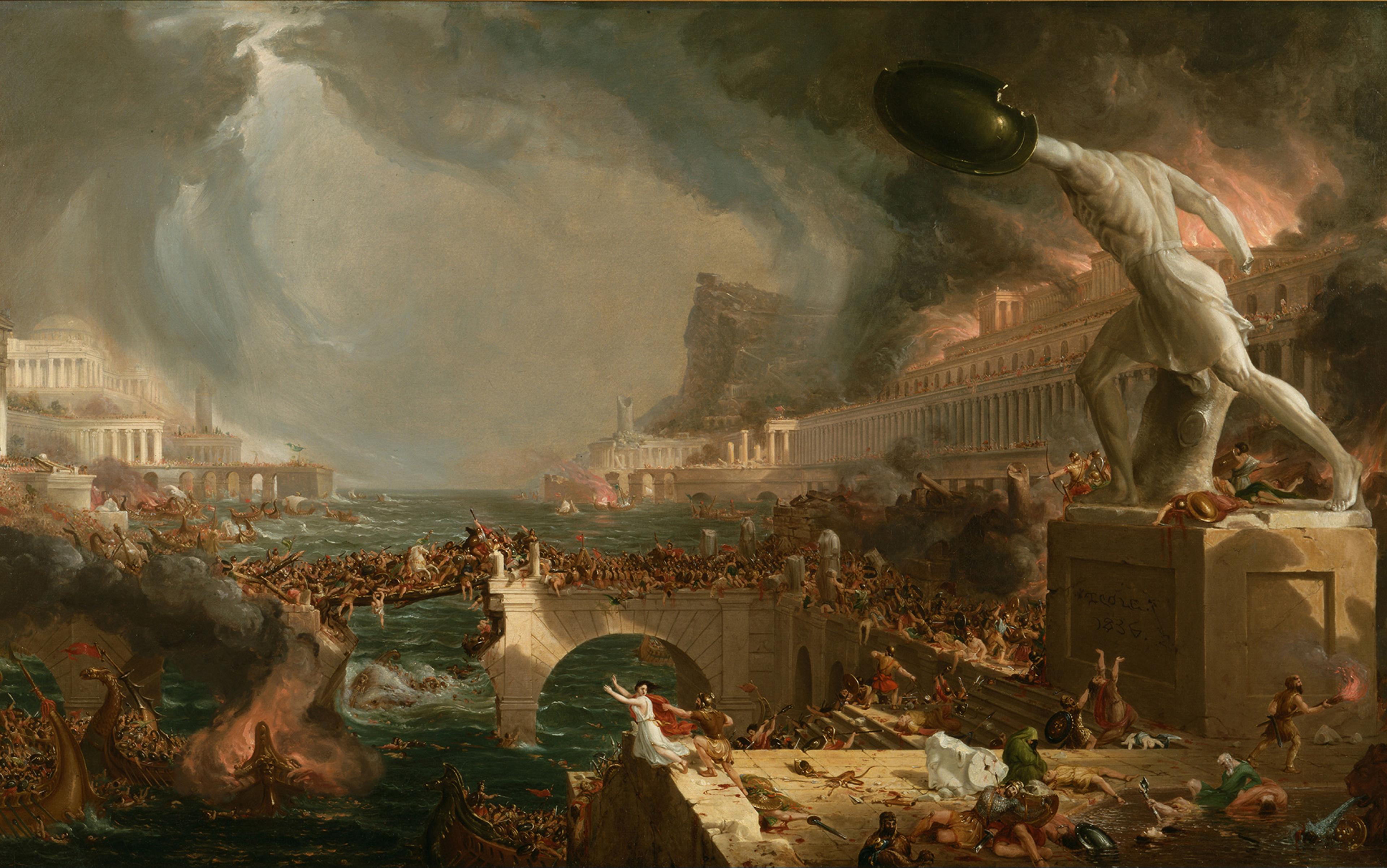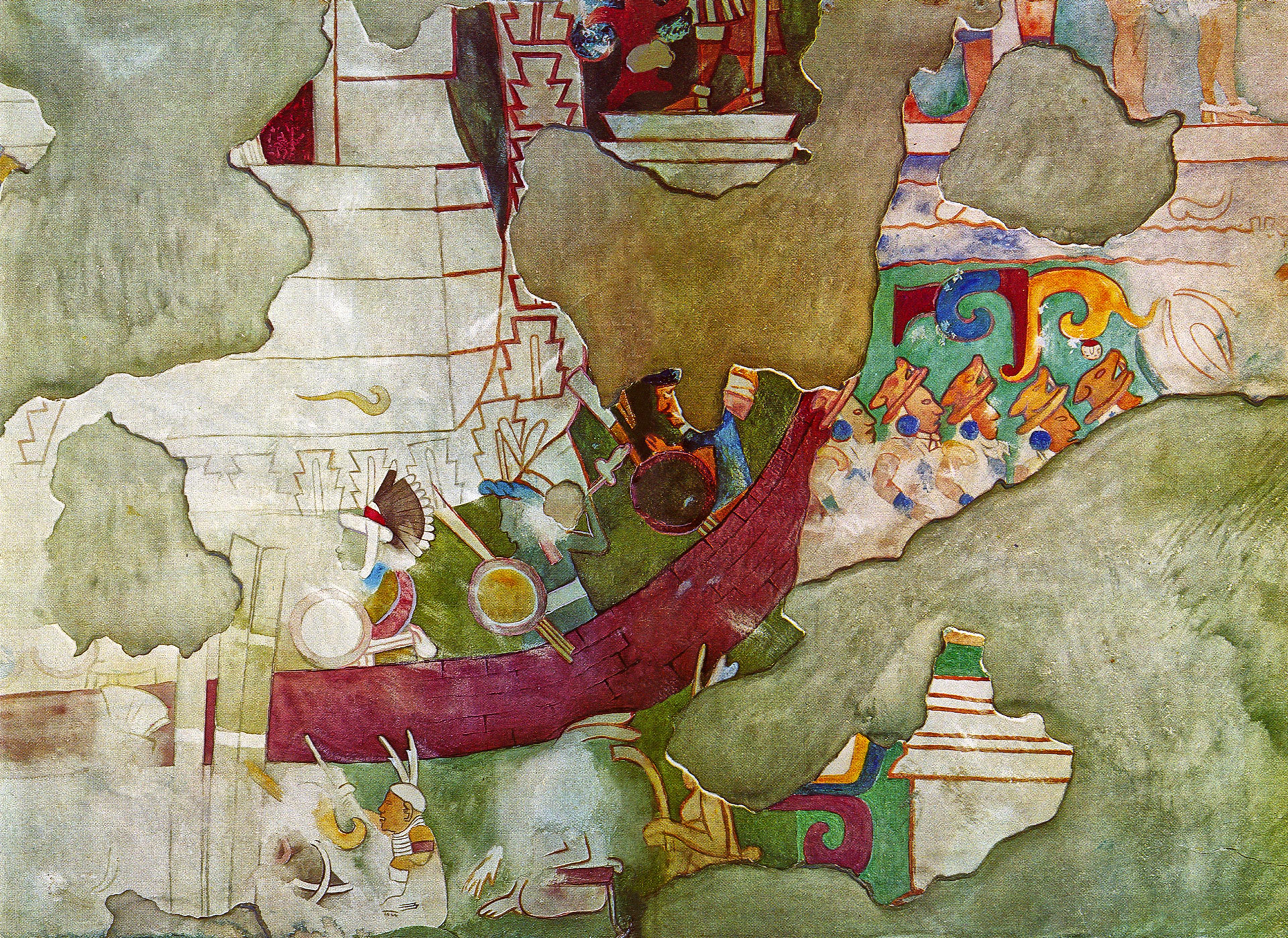Gemelli Careri, an Italian adventurer, circled the world in the late 17th century. No part of his journey was more dangerous than the trip from Manila to Acapulco, made in 1697 on one of the deep-drafted, many-sailed boats known as the Manila Galleons. These trading ships spent more than two centuries delivering spices and luxury goods from Asia to the New World and Europe, earning enormous profits for their financiers, mostly Spanish colonists in Manila. But here is Careri’s description from Giro del Mondo (1699) of what life was like for their sailors:
There is Hunger, Thirst, Sickness, Cold, continual Watching, and other Sufferings … [The sailors] endure all the plagues God sent upon Pharaoh to soften his hard heart; the Ship swarms with little Vermine, the Spaniards call Gorgojos, bred in the Bisket … if Moses miraculously converted his Rod into a Serpent, aboard the Galeon a piece of Flesh, without any Miracle is converted into Wood, and in the shape of a Serpent.
The journey was interminable, the sea was unruly, the food infested. ‘Abundance of poor Sailors fell Sick,’ Careri writes. As a paying passenger, he would have had slightly better conditions than most of the crew. But status didn’t provide much safety: by the end of his journey, two officers, one pilot’s mate and the Captain Commander were buried at sea, their bodies dragged down by earthen jars tied around their ankles.
The captain died of a disease known as ‘Berben’, which according to Careri ‘swells the Body, and makes the Patient dye talking’. The second disease, and the most dangerous to the galleon’s sailors, ‘is called the Dutch Disease, which makes the Mouth sore, putrefies the Gums, and makes the Teeth drop out’. This one is more familiar – we know it as scurvy. For most of its two and a half centuries in operation, the galleon’s sailors died in droves of these and other heinous maladies, teeth rattling from their heads, boils blooming on their limbs like black flowers.
The Berkeley historian Jan DeVries found that some 2 million Europeans made trading voyages to Asia between 1580 and 1795. Of these, only 920,412 survived: an overall mortality rate of 54 per cent. European companies, DeVries concludes, sacrificed one human life for every 4.7 tons of Asian cargo returned to Europe. Of course, the Europeans spread their diseases when they travelled, and made liberal use of violence, so the suffering of the people they ‘discovered’ was even more awful than their own. But no less than colonialism itself, the unrelenting horrors of these sailors’ lives helped forge the world we live in.
The first Manila Galleon made the round trip between Acapulco and Manila in 1565, and then did it nearly every year until 1815. It was the last link connecting the Earth’s human populations. ‘As soon as the Spanish arrive in Manila,’ says Arturo Giráldez, professor of Spanish literature at the University of the Pacific in California, ‘we have a permanent connection between all the landmasses.’
Though much of the history of European exploration is told through fantastic tales of overland quests for cities of gold, the galleons, their owners and their crews had no more mythical or lofty goals than Maersk or other giant merchant shipping concerns do today. It was the seaborne quest for trade that bound the far reaches of the globe together, and it is trade that has kept the world connected.
Foremost among the objects of trade were spices. After being introduced to benighted Europe from the Middle East during the Crusades, Asian spices became spectacularly prized for both their taste and their purported medical benefits. For decades, the most desired spices, including nutmeg and clove, were grown only on tiny Pacific islands called the Moluccas. They came to Europe through complex overland chains of Asian and Arab middlemen, who each took exorbitant premiums.
Europeans soon realised that they had the means to cut out those middlemen: spectacularly advanced maritime technology. Trade in the Mediterranean had relied since antiquity on slow-moving galleys, driven by oars, hard to steer, and with shallow drafts that made them unfit for the open ocean. But advances starting in the seventh century had deepened keels, multiplied sails, and made rudders sturdier. This new breed of ship, which would become the backbone of the galleon trade, was fast and manoeuvrable, able to withstand stormy seas while carrying huge amounts of cargo and large cast guns.
Leveraging this new technology, the Portuguese reached the spice islands of Southeast Asia by sailing around Africa in the 15th century. The 1494 Treaty of Tordesillas prevented the world’s other then-great power, Spain, from taking the same route – so they started searching for a westward path, by way of the New World.
The first to confront the task was Ferdinand Magellan, one of the explorers least due the reverence granted by grade-school history lessons. Magellan’s Spanish fleet (he himself was Portuguese, real name Fernão de Magalhães) left Seville in 1519, rounding the tip of South America and crossing to Asia in 99 days. Even that brief journey was more than Magellan had prepared for: by the time the fleet reached Guam, his sailors were gnawing on the leather fittings of their sails out of hunger.
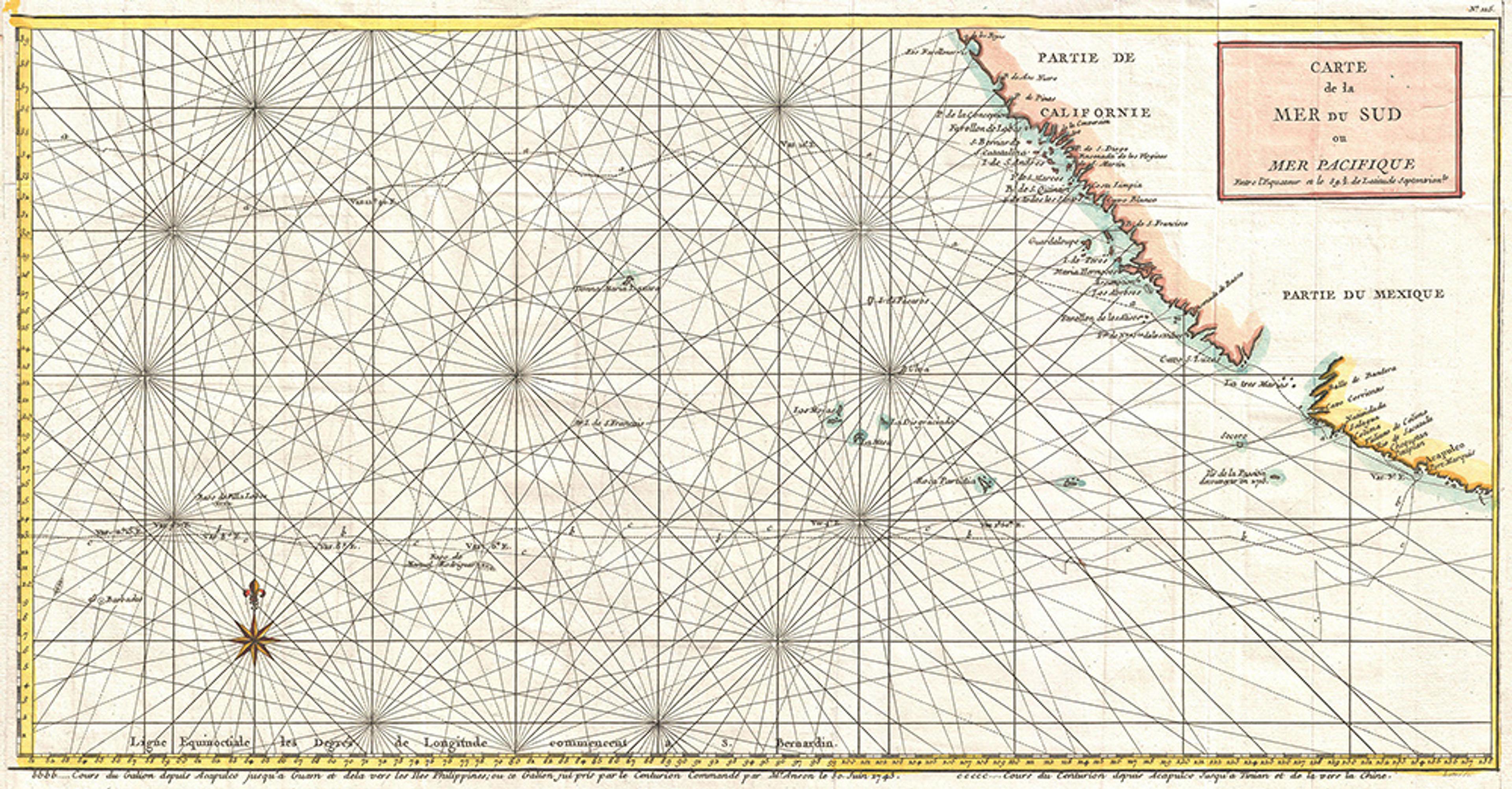
1750 nautical chart of the Pacific Ocean depicting the trade routes used by Spanish Galleons from Acapulco, Mexico heading towards Manila in the Philippines. Photo courtesy Wikimedia
Worse, Magellan didn’t know how to sail back to Mexico. Today’s carbon-fuelled ships can largely ignore the forces swirling around them, and simply follow the straightest possible line to their destination. But in the age of sail, wind and currents were a ships’ fuel. Corralled by the great forces of lunar gravitation, climate, and the Earth’s rotation, the oceans travel great looping paths that remain steady for centuries. These were the highways of European exploration and trade. While Magellan had known where to find the westward current to Asia, he didn’t know the way back.
On 27 April 1521, Magellan got himself killed in a local conflict in the Philippines, and his fleet fell apart. His ship, the Trinidad, attempted to sail back across the Pacific the way it had come. It spent months being pushed back to Asia – the naval equivalent of trying to climb up the down escalator – before the crew finally surrendered in despair to local Portuguese forces. The second ship, the Victoria, took an existing westward route home, rounding Africa and returning to Spain in September 1522, completing the first full circumnavigation of the Earth.
It was a historic milestone, but no model for a profitable trade route. For that, the Spanish needed to find the return route from Manila to Mexico, the eastward leg of the Pacific Gyre. They spent decades searching for it, before finally succeeding thanks to the sailor-monk Andrés de Urdaneta. A different breed altogether from Magellan, and far more deserving of memorialisation, Urdaneta was thoughtful and devout. He had stayed for 9 years on the Moluccas after an ill-fated 1525 Spanish expedition, so he knew the region well. He was 66 and a man of the cloth in Mexico City when, in 1564, the Spanish crown drafted him to help finish Magellan’s work.
Urdaneta served as pilot of a small fleet under the command of Miguel López de Legazpi. The fleet, first following Magellan’s route westward from Mexico, captured the Philippines for Spain, and established Manila as a Spanish commercial base. In 1565, acting on local knowledge gleaned during his lengthy stranding on the Moluccas, he guided one ship, the San Pablo, north from Manila along the coast of Japan. There, he found the northward Kuroshio Current – the first leg of a great watery highway that soon turned eastward, towards Mexico. This, at last, was the long-dreamed of tornaviaje, or return. Finding it was Urdaneta’s greatest accomplishment.
the galleons’ amazing profitability showed, long before Adam Smith, that national specialisation was the source of wealth: those who conquered the distance between regions could reap it
The narrow thread of force that connected Manila to Acapulco was, as it turns out, much less friendly to humans than its westward counterpart. The 11,500 miles Urdaneta crossed while returning to Mexico was then the longest sea journey ever made without landing. He took on no fresh water or food for more than four months. Much of the journey, as Careri would attest more than a century later, was both stormy and frigid. By the time they reached land again, Urdaneta’s crew was exhausted and malnourished. What they weren’t, mostly, was dead. In light of what followed, this is astounding.
One or two ships sailed Urdaneta’s route each year for the next two and a half centuries. The Manila Galleons were immensely profitable, with the lion’s share of the proceeds flowing to the Spanish colonists in Manila who financed and organised the trade. The ships arrived from Mexico laden with silver, which the Chinese badly needed for their rapidly expanding monetary system. They returned carrying not just Indonesian spice – Spain’s original object – but Chinese silk and porcelain, and Japanese jewels and preserves.
In Manila, life was leisurely, even beautiful. The work of administering the galleons took up only two or three months of a year, with the rest of the colonists’ time given purely to lavish parties, carriage rides, and social intrigue. The Spanish were singularly indolent occupiers, developing no aspect of the local economy except the galleon trade. They couldn’t even be bothered to dig up the Philippines’ gold, currently calculated as the third largest reserve in the world. They were interested in profit, not in shaping the lives of the people they colonised.
Though just as one-dimensional as the conquer-and-plunder approach taken elsewhere by the Spanish, the Philippine occupation was different in one crucial way: the resource they were exploiting was not Manila’s metal, spice or opium, but its location between the spice islands, China and the New World. Europe was still in the grip of a mercantilist economic ideology that valued exports over multilateral trade. But the galleons’ amazing profitability showed, long before Adam Smith wrote it down, that national specialisation was the source of wealth, and those who conquered the distance between regions could reap that wealth.
The galleons ushered in global capitalism in another, bleaker way. Friedrich Engels, observing the disease, malnourishment and suffering rampant in London’s nightmarish 19th-century slums, would write that ‘everything which here arouses horror and indignation is of recent origin, belongs to the industrial epoch’. Engels was wrong. The age of sail gave us the same kind of horror, or worse.
The crossing that Urdaneta first completed in four months took longer for the less savvy sailors who followed in his wake: five months, sometimes as many as eight, with no fresh water but from rain, and no fresh food but from the sea. Never before had humans been so isolated from their natural environment, for so long, in such numbers. Centuries before the slums of industrial Europe, the trade ships of the Pacific were full of sailors rolling in their own shit, starving to death, and ravaged by disease – a Breugellian vista of Hell, compacted into a boat. At times, the dangers grew too great. In 1657, the San Jose was found drifting off the coast of Acapulco, every last crewman and passenger dead.
The typical provisions of a trading ship consisted of salted, preserved meat, a variety of beans, wine, oil and vinegar and, usually in scant portions, luxuries such as honey, chocolate, rice, almonds, and raisins. But the most famous staple was hardtack, or ship’s biscuit. This was a sort of primitive granola bar made by baking a dense dough until it was hard as a rock. The process was supposed to preserve it, but the sea was merciless. ‘In every Mouthful,’ said Careri, ‘There went down abundance of Maggots, and Gorgojas chew’d and bruis’d.’
Gorgojo now means weevil, but there are multiple contemporary accounts of them feeding on crewmembers, so that meaning might have shifted. Regardless, various tiny creatures constantly besieged sailors’ veins and food supplies. Careri also describes soups swimming with ‘worms of several sorts’, and beans infested with maggots. The sailors had little option but to dig in.
their flesh began to decompose before their eyes, skin taking on the soft touch of fungus
Fishing provided psychological relief from this nightmare, but didn’t solve the underlying, disastrous problem: the total lack of fruit and vegetables. A certain amount was loaded on departure from Manila, but this was reserved almost exclusively for officers, and consumed within weeks. Those aboard could not have understood the chemistry or biology that made this so deadly. They saw only the consequences.
At around the third month without landfall, the sailors’ gums would begin to swell, while their energy flagged. As their condition progressed, the gum tissue became so swollen that sailors sometimes cut large chunks from their own mouths – and felt nothing. As lethargy overwhelmed them, the rest of their flesh began to decompose before their eyes, skin taking on the soft touch of fungus, and black ulcers swelling from it. This was followed by multiple organ failure and, ultimately, death.
Many between the 16th and 19th century reckoned scurvy a consequence of the malodorous vapours of the Pacific. Careri and many others knew that ‘the best remedy against it, is going ashore’ but exactly why wasn’t known. A scattered few had observed that fresh fruit cured the disease, but many seamen thought burying a victim up to the neck in dirt was also a powerful cure.
Even as their crews rotted alive, the galleons often carried Chinese ginger as part of their payload of prized spices. Though ginger was generally known for its medicinal as well as culinary properties, it was not understood that it is a source for ascorbic acid, or vitamin C, which is crucial to the body’s synthesis of collagen, the basic building block of our connective tissues and skin. In its absence, humans literally fall apart.
Those not killed by scurvy were at risk from another inescapable element of life on the galleons: severe crowding. Priests, who had free passage as missionaries, were sometimes crammed into cabins so small they had to rest their heads on one another’s feet. In 1767, aboard the San Carlos, 62 Jesuits were confined to a space meant for 20. They were then joined by 25 soldiers and a small herd of pigs. And these were the privileged: most sailors were expected to simply cram themselves into any available corner.
While all sea vessels are necessarily confined, the galleons had a particular problem. Space on these ships, especially on the return trip to Acapulco, was astronomically valuable. Their crowding embodied what the historian Jack Turner calls ‘the law of increasing exoticism’: ‘The further they travelled from their origins, the more interesting [spices and trade goods] became, the greater the passions they aroused, the higher their value.’ The returns on even small cargos from the East could be huge.
This led to some amazingly inhumane decisions by those in charge. Careri describes huge shipboard cisterns, designed to both store and collect water on the journey, being smashed to make room for goods belonging to an officer’s friends. This was practically an act of murder: sailors’ ration of water was already a mere two pints a day. Frequently, ships sailed without backup sails and repair supplies, and it was common practice to store the guns to save space, making them useless for repelling pirates, which often lurked in wait of the galleons’ precious cargo.
The most common product of severe crowding was infectious disease. Microbiotic fiends traversed the constantly moist membranes of passengers and sailors, breeding typhus (known as ‘ship fever’) and typhoid (a disease spread by fleas and ticks). These were later joined by new diseases of exploration such as yellow fever and syphilis, the latter discovered in the New World before spreading to Europe and, primarily by the galleons themselves, to Asia.
Disease was exacerbated by a primitive view of cleanliness among Europeans of the age. Though latrines that cantilevered over the ocean were available on some galleons, many sailors didn’t use them, instead shitting into the ship’s bilge, or even in the general hold. In part, Careri tells us, that was because of the incessant, brutal cold. But this indifference was widespread. The French sailor François Pyrard de Laval wrote in 1610 that typical Portuguese ships around India were ‘mighty foul and stink withal; the most men not troubling themselves to go on deck for their necessities’.
The lack of basic hygiene on ships illustrates the vast gap between early modern knowledge of geography and sailing on the one hand, and of the internal frontiers of the human body on the other. It was well-known that the world was round, part of the basis for the galleons’ amazing navigational leap. But few educated Europeans of the 16th and 17th century had more than the vaguest concepts of nutrition, infection, germs or the role of cleanliness in health. Most ships, even as late as the 18th century, relied for rudimentary medical help on a multitasking barber whose most effective tools were his enema syringe and tooth-puller.
This had deep intellectual roots. For the 15th and most of the 16th century, medical authorities were engaged in a kind of backwards march, blindly deferential to the second-century Greek physician Galen. Galenistic medicine was based on the theory of the humours, a set of materials with various qualities that had to be balanced within the body.
the sailors wore the yoke of global commerce, were worked to death, and then forgotten
Advancement past this theory was hampered by a Papal ban on human dissection for research, not lifted until 1482. But a rationalistic approach to illness was, even then, centuries away. The Manila Galleons launched more than 30 years before the birth in 1596 of René Descartes, whose thinking would prove foundational for the very concept of an ‘experiment’. They launched precisely a century before Robert Boyle, in 1665, became the first to make biological use of the word ‘cell’. The connection between cleanliness and contagion wasn’t persuasively argued until John Pringle’s Observations on the Diseases of the Army (1752). The first controlled experiments showing the effectiveness of citrus fruits in preventing scurvy were performed by James Lind in 1747. In fact, they were the first properly controlled medical experiments ever conducted.
But there was more than simple ignorance behind the suffering of the galleons’ sailors. The ships were often suspiciously overcrewed. They could be sailed by 40 or fewer, but carried crew complements of between 75 and, as the ships grew larger, 200. In Vanguard of Empire (1993), Roger C Smith points out that this overcrewing was due to the (correct) assumption that many of the crew would die.
Providing better food was known to decrease mortality – emergency rations of higher quality were packed on all ships to aid the recovery of the ill (though Careri observed that most of that quickly ended up at the captain’s table). But providing higher quality food would have been a major expense for financiers, without greatly increasing the likelihood that a ship’s cargo would arrive intact – which is all that really mattered to them. In fact, since the bulk of salaries was paid only at the end of a round trip, allowing half of all crew to die would have been a double cost saving. And so the sailors wore the yoke of global commerce, were worked to death, and then forgotten.
The Manila Galleon was ultimately undone by its own success. The route was eventually worked by ships of almost every European power, albeit illegally. Merchant competition for Asian goods drove up prices, while cheaper manufactured textiles undercut demand. In 1770, the Frenchman Pierre Poivre began successfully cultivating nutmeg and clove in the Indian Ocean, ending the spice monopoly of the Moluccas. The final decades of the Manila line were marked by frequent losses (both maritime and economic) and half-filled ships. The last galleon ran in 1815.
By then, it was just one part of an expansive network of global shipping. Commercial steam power, which emerged in 1807 on the Hudson River, would eventually make that trade faster, more efficient – and much less deadly. The months-long Pacific crossing that killed a million men can now be made, even by the most leisurely of diesel container ships, in two weeks.
Reliable global trade underpins the unprecedented affluence now shared by many humans. In a better world, it might have spread its benefits even more widely. But today’s robust network, and the technology that underpins it, would likely never have appeared without a template to guide their growth. That template was crude, exploitative, unreliable – and very often, for the men whose bodies fuelled it, gruesomely lethal.
